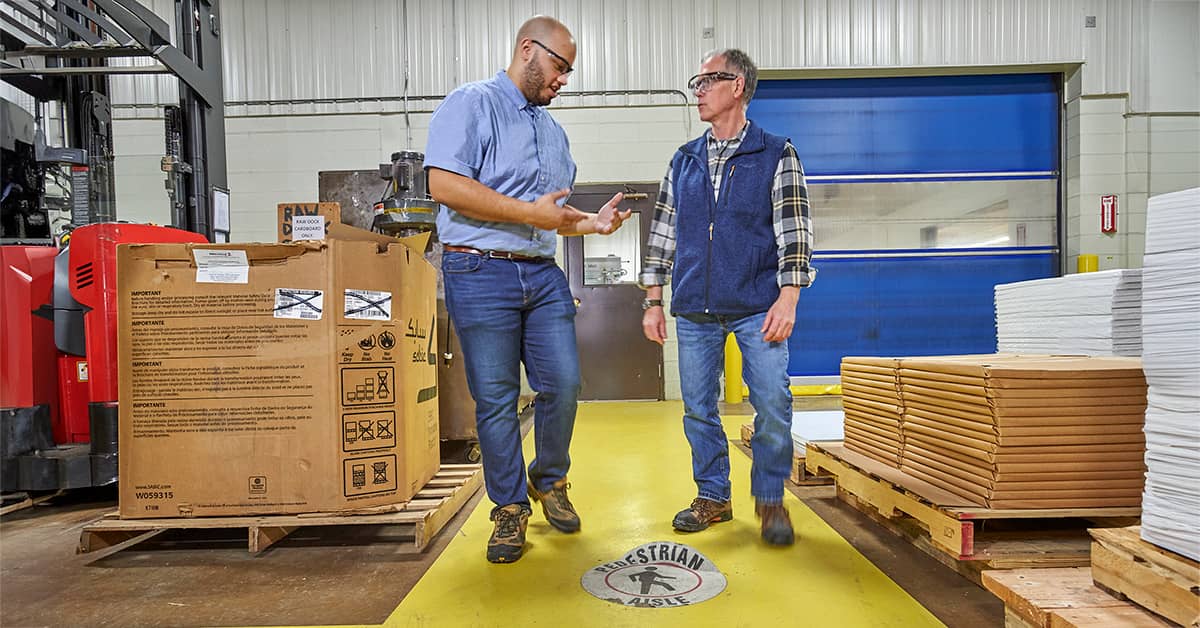Keeping walking-working surfaces safe is everyone’s responsibility
Date Posted: 08/19/2024

Falls are the leading cause of death and serious workplace injuries in general industry. In fact, data from the Bureau of Labor Statistics show falls cost employers over $15 billion each year.
Being unaware of fall hazards is a big mistake for employees if they work on or under elevated platforms, climb ladders, descend stairs, or work in areas where there may be holes in the floor. Even if there’s a firm, level working surface to walk on (office floors, factory shop floors, etc.), employees can still be injured. The majority of incidents occur on the same level rather than falls to lower levels.
What’s considered a walking-working surface?
Essentially, any surface you walk on, work on, or use to gain access to an area in a workplace is a walking-working surface. OSHA says this includes, but is not limited to:
- Floors,
- Aisles and walkways,
- Stairways,
- Roofs,
- Ladders,
- Ramps,
- Dockboards,
- Platforms, and
- Equipment.
Preventing falls in the workplace
Employers are responsible for providing a safe working environment. That includes reducing or eliminating hazards related to walking-working surfaces by:
- Keeping the workplace clean, orderly, and sanitary.
- Maintaining floors in a clean and dry condition. If wet processes are used, drainage must be maintained, and dry standing places should be provided.
- Keeping surfaces free from protruding nails, splinters, or loose boards.
- Keeping aisles and passageways clear and in good repair with no obstructions that could create hazards.
- Marking permanent aisles and passageways.
- Maintaining proper aisle width so as not to limit passage or emergency evacuation.
- Providing covers and/or guardrails to protect open pits, vats, tanks, ditches, and other hazards.
- Following safe load rating limits for all floors, platforms, and roofs.
- Maintaining adequate lighting.
- Providing handrails as required.
Employees’ responsibilities include:
- Keeping the workplace clean and organized;
- Using proper procedures to inspect, erect, maintain, and disassemble ladders and fall protection systems;
- Knowing the load limits and other restrictions for any fall protection equipment;
- Following instructions to properly inspect, use, and maintain equipment; and
- Following the company’s procedures for reporting poor housekeeping and fall hazards.
How Safety Management Suite Can Help
Walking-working surfaces include designated areas, dockboards, floors, ladders, mobile platforms, and much more. Good housekeeping practices and regular inspection of ladders also are a must when it comes to eliminating fall hazards. Where to start? The Audits feature in J. J. Keller® SAFETY MANAGEMENT SUITE provides numerous ready-to-use walking-working checklists you can use to identify and eliminate hazards and helps ensure you’re in compliance with OSHA’s requirements.
E-mail Newsletter
Sign up to receive the weekly EHS Insider email newsletter for safety articles, news headlines, regulatory alerts, industry events, webcasts, and more.